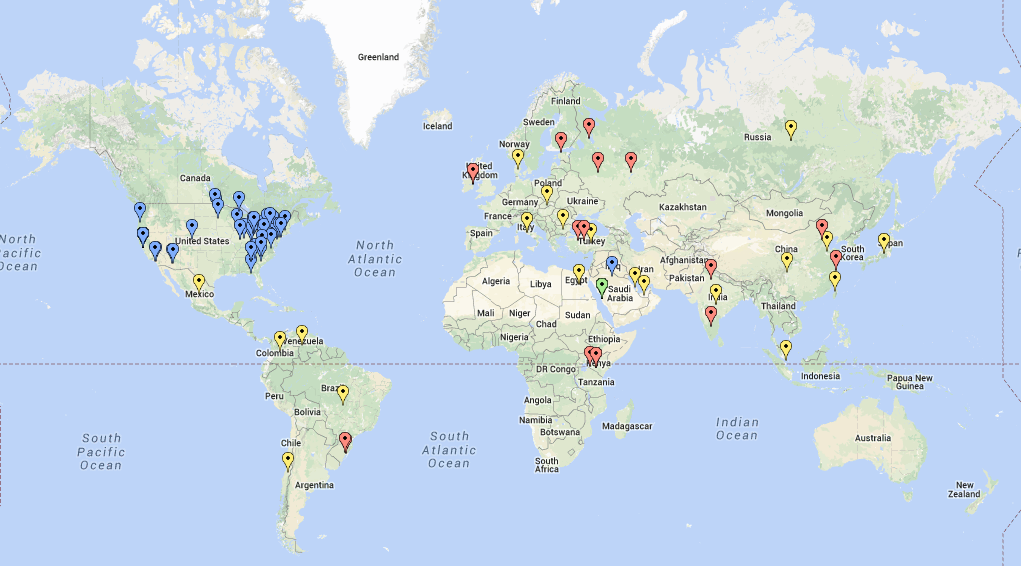Blowing up the Business Plan at UC Berkeley

A post I wrote with Steve Blank for his blog:
When I came to U.C. Berkeley in 2010 to run the Lester Center for Entrepreneurship in the Haas School of Business we were teaching entrepreneurship the same way as when I was a student back in 1995. Our core MBA class used the seminal textbook New Venture Creation by Jeffrey Timmons of Babson College that was first published in 1977. The final deliverable for that class was a 30-page business plan. We had multiple business plan competitions. As I looked around at other schools, I saw pretty much the same landscape – business plan classes, business plan competitions and loosely coupled accelerators that focused primarily on mentoring.
Over my career as a serial entrepreneur I observed that since the late 1990s, no early-stage Silicon Valley investor had used business plans to screen investments. Even those who asked for them never read them. Traction and evidence from customers were what investors were looking for – even in “slow” sectors like healthcare and energy. There had been tectonic shifts in the startup world, but our business school curriculum had barely moved.
There was a big gap in our educational paradigm. To create great entrepreneurs, we had to give our students the experience of navigating the chaos and uncertainty of running a lean startup while providing the same kind of rigorous framework the business plan did in its day. The advantage of following New Venture Creation is that it had a deep pedagogical infrastructure that students took away after they left school. The disadvantage is that its methodology was based on the old waterfall model of product development and not the agile and lean methods that startups use today.
As I began my search to increase the relevance of our entrepreneurship curriculum with the same rigor as Timmons and New Venture Creation, I found the answer right here at Berkeley, in Steve Blank’s Lean LaunchPad class.
(Our founding Executive Director Jerry Engel, recently retired to become dean of faculty for the National Science Foundation I-Corps, had a tradition of incorporating leading practioners, like Steve. These ‘pracademics’ proved to be some of the biggest innovators in entrepreneurship education.)
Seeing Is Believing
The Lean LaunchPad class was completely different from a traditional entrepreneurship class. It taught lean theory (business model design, customer development and agile engineering) and practice.
Every week, each student team stood in front of the class and presented their business model hypotheses, what they had learned from talking to customers, demo’d their minimal viable products and had to explain what they were going to do next. Steve and the venture capitalists at the back of the room relentlessly peppered them with questions and pushed them to get out of the building and call on the real decision-makers instead of talking to people they already knew. Some teams stepped down from the podium proud that they had made real progress that week while others were chastised because they stuck to their comfort zone, were not doing the tough work required by entrepreneurs and on the road to failure.
I realized this class was teaching students exactly what it felt like to be an entrepreneur! Great entrepreneurs are on a search for the truth, no matter how wrong their initial conception is. Being an entrepreneur is about starting out with no idea whether you are working on the next big thing or something no one wants and certainly no one will pay for. It’s struggling to find the right path forward through chaos and uncertainty. Killing bad ideas quickly and moving on. Staring at the phone while mentally wrestling to pick it up to make that next cold call. It’s having investors tell you that you’re dead wrong and, perhaps with enough customer traction, showing them the path to a new future neither of you could see at the time.
And there it was. The Lean LaunchPad was unlike any class I’d ever seen.
As a Silicon Valley entrepreneur I had lived the lean approach, yet I had never seen it taught. Done informally as part of an accelerator, yes, but not with a framework based on a clear process and clear pedagogy. The Lean LaunchPad was teaching students concepts and a process that they took away from the class and could use again for their next startup. I realized I was looking at a paradigm shift in entrepreneurial education – away from the business plan-focused model to a Lean Startup model. (The irony is that once you’ve gone through the lean cycle, you have all the information that goes in a business plan: customers, sales strategy, product features, and financial metrics. It’s just that they are validated instead of made up.)
The Business Plan is Dead
Now, 4 years after I arrived at BerkeleyHaas, we don’t teach business plan writing in any of our entrepreneurship classes or in any of our dozens of programs and competitions. We use Customer Development and the Lean LaunchPad to train and accelerate teams U.C. Berkeley-wide.
We’ve gone global as well. In the past year alone, we’ve taught over 250 teams, over 1,000 entrepreneurs and their mentors in dozens of countries how to create scalable startups in domains from software and hardware to healthcare and energy.

The international teams watch the lectures online, get out of the building, present to us each week via WebEx and get the same brand of relentless and direct feedback their U.C. Berkeley peers got in Steve’s class. For example, our Intel Technology To Market Accelerator took 22 teams from 11 countries across 15 time zones, from northern Russia to southern Chile and from Saudi Arabia to the U.S. (Chicago) through the Lean LaunchPad process. Clearly, lean works globally.
And we’ve been part of the U.S. effort to use the Lean LaunchPad to accelerate commercialization for the country’s best research spinouts from the National Science Foundation and National Institutes of Health. We do this by running classes for the NSF Innovation Corps and The I-Corps at the NIH. And the same lean techniques work just as well in the corporate innovation programs we run such as the Intel Make It Wearable Challenge.
An important distinction is that these programs are accelerators. The teams in them start with an idea or product, meet with customers, build prototypes and search for a scalable business model. All declare their startup a “go” or “no go” at the end. They learn it’s all about building to scale, pivoting or declaring failure, and moving on using a hypothesis-driven search for the truth.
Even our venerable 15-year old business plan competition, once dubbed “bplan,” has transformed into LAUNCH, a multi-month accelerator with a rigorous process combining the Lean LaunchPad, agile product development and a focus on measurable Lean Analytics. Ironically, LAUNCH has turned out to be much more rigorous than the prior business plan competition because we immerse every entrepreneur and their mentors in conquering the chaos and uncertainty that is normal for startups. We expect them to come out with specific knowledge of their markets and business ecosystem, verified metrics, a product and a plan for moving forward based on interacting with their actual customers – not honing the teams for a beauty pageant-like pitch fest or making them produce a business plan that’s fundamentally speculative. As educators, we are having a deep impact on these entrepreneurs and their startups.
Lean LaunchPad Works Across Industries
I often hear the concern that the Lean LaunchPad only works for software. After 700 teams in robotics, materials, hardware, therapeutics, diagnostics, medical devices, and enterprise software, it’s clear that Lean Startup methods work across all industries. We’ve taught versions of the Lean LaunchPad for life sciences at UCSF and as part of the National Institutes of Health, for hardware-focused startups making wearable devices as part of the Intel Make It Wearable Challenge, for teams working on nanotechnology and in education (STEMKids and Build and Imagine). Two of our BerkeleyHaas Faculty, Jorge Calderon and Will Rosenzweig, created a Social Lean LaunchPad class that embraces the mission and stakeholders central to social ventures.
Whether it’s making iPhone apps or medical devices, every startup is looking for a repeatable and scalable business model. Focusing on finding customer needs, figuring out how they buy and how to scale up product delivery are universal.
Where We Are Going From Here
At U.C. Berkeley we’ve undergone a complete transformation in just four years. But the longer journey is to continue to build new lean-tools and classes separate from the 40 year-old, business plan-based tradition.
We continue to ask ourselves, “What can we do to get our students out of the classroom, in cross-functional teams, building for specific customers and having the experience of making hard decisions under conditions of uncertainty? What can we do to expand and deepen the rigor of the Lean Startup methodologies and fully elaborate our curriculum?”
At BerkeleyHaas we are sharing what we are learning (see below). By embracing lean, you can be assured you will be giving your students essential innovation skills they will use for the rest of their lives. You will see great startups focused on solving real customer problems emerge as well. This is an exciting journey and we are all right at the start.
Some resources for shifting the paradigm in your organization:
- Lester Center for Entrepreneurship
- VentureWell Resources for I-Corps
- VentureWell Lean LaunchPad Master Video Library
- Hypershift in corporate innovation
Lessons Learned
- Early-stage investors don’t read business plans
- We are in the middle of a shift in entrepreneurship education from teaching the waterfall model of startup development (enshrined in business plans) to teaching the lean startup model
- The Lean LaunchPad process works across a wide range of domains – from science and engineering to healthcare, energy, government, the social sector and for corporate innovation
- Customer Development works outside Silicon Valley. In fact, it works globally
- The Lean LaunchPad is a business process that teaches entrepreneurs and innovators to make business-focused, evidence-based decisions under conditions of chaos and uncertainty. It’s a big idea


